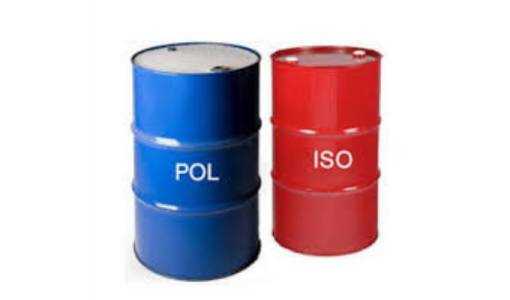Description
PUF Chemical: Polyurethane Foam Chemistry Explained
PUF Chemical refers to the chemical formulations used to create polyurethane foam (PUF). This isn't a single chemical, but rather a carefully balanced system of polyols, isocyanates, and various additives that react to form a versatile and widely used material. Understanding the underlying chemistry allows for tailoring PUF properties for specific applications.
Key Components:
- Polyols: These are polyfunctional alcohols that provide the hydroxyl (-OH) groups necessary for reaction with the isocyanates. The type and molecular weight of the polyol significantly influence the final foam's properties, including density, flexibility, and rigidity. Common types include polyether polyols (flexible foams) and polyester polyols (rigid foams).
- Isocyanates: These are highly reactive compounds containing isocyanate (-NCO) groups. They react with the hydroxyl groups of the polyols to form urethane linkages, the backbone of the PUF structure. The most common isocyanate used is methylene diphenyl diisocyanate (MDI), known for its high reactivity and ability to create high-performance foams. Toluene diisocyanate (TDI) is another common, though less environmentally friendly, option.
- Additives: A range of additives are incorporated to modify the PUF's properties and processing characteristics. These include:
- Catalysts: Accelerate the reaction between the polyol and isocyanate, controlling the foam's rise time and overall cure speed.
- Surfactants: Reduce the surface tension, allowing for uniform cell formation and a consistent foam structure.
- Blowing agents: Generate the gas bubbles that create the foam structure. These can be physical blowing agents (e.g., pentane, cyclopentane) or chemical blowing agents (e.g., water, which reacts with isocyanate to produce carbon dioxide).
- Flame retardants: Improve the fire resistance of the foam.
- Colorants: Add color to the final product.
- Stabilizers: Enhance the foam's long-term stability and resistance to degradation.
Types of PUF Systems:
The chemical composition of the PUF system determines the properties of the final foam. This allows for a wide range of applications, including:
- Flexible PUF: Used in mattresses, cushions, furniture, and automotive seating. Generally utilizes polyether polyols and TDI or MDI.
- Rigid PUF: Used in insulation, refrigeration, and construction. Typically utilizes polyester polyols and MDI, often with higher densities.
- Semi-rigid PUF: Offers properties between flexible and rigid foams, finding use in packaging and automotive components.
Safety Considerations:
PUF chemicals, particularly isocyanates, are potentially hazardous. Isocyanates are respiratory irritants and can cause allergic reactions. Proper handling, personal protective equipment (PPE), and ventilation are crucial when working with these chemicals. Always refer to the Safety Data Sheet (SDS) for specific safety information.
Applications:
The versatility of PUFs makes them essential in numerous industries, including:
- Construction: Insulation, roofing, and sealant applications.
- Automotive: Seating, dashboards, and interior components.
- Furniture: Cushioning, upholstery, and padding.
- Appliances: Refrigeration insulation.
- Packaging: Protective cushioning and insulation.
Conclusion:
PUF chemical formulations represent a complex but crucial area of materials science. The careful selection and precise proportions of polyols, isocyanates, and additives allow for the creation of customized foams with tailored properties to meet diverse industrial needs. However, safe handling practices and adherence to safety regulations are paramount when working with these materials.
